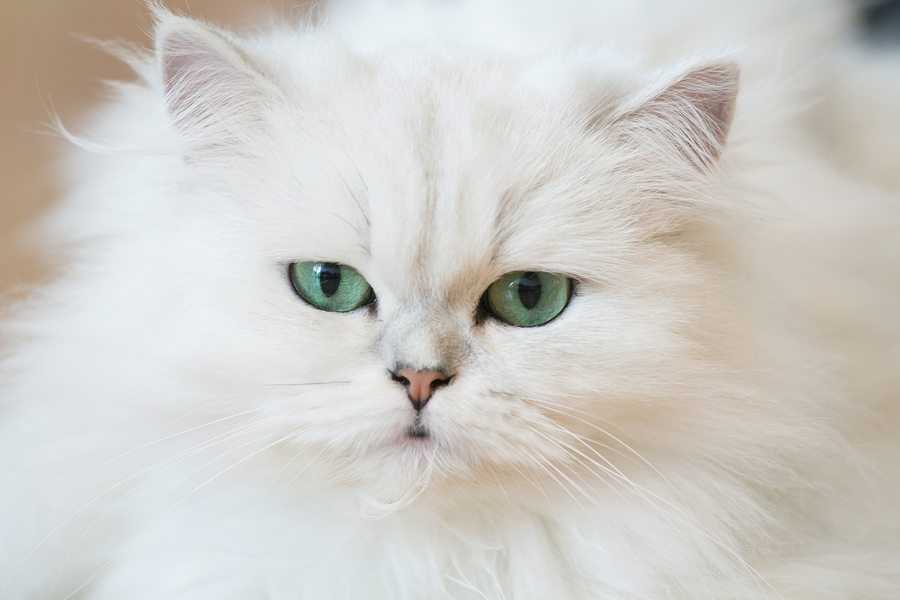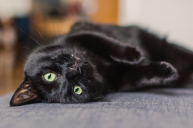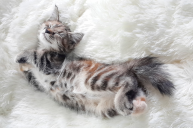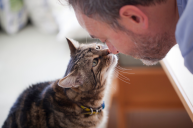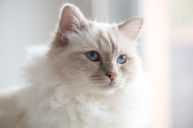WATCH NOW: Persian Cats Are Like Little Kings and Queens
The Persian cat sits on the throne of its household. This breed holds the distinction of being one of the breeds favored by royalty. And it's easy to understand why. With beautiful luxurious coats and regal personalities, Persians are pretty much royalty in feline form.
Persians may be gorgeous and seem like the perfect cats, but make sure you're ready for everything that comes with this breed. These kitties require a lot of extra care. But, if you're ready to pamper your cat a bit, you'll be rewarded with a loyal feline friend.
Persian Cat History
The Persian cat is one of the oldest cat breeds, seen depicted in hieroglyphics as early as 1684 B.C. They are called Persians because they were first brought to Europe from Persia (modern-day Iran) in the early 1600s. But no one can be sure exactly where they originated.
These longhaired cats became favorites of royalty, like Queen Victoria. And Persians made their American debut in the early 19th century.
https://www.instagram.com/p/B-a0_owAiCU/
The Persian is by far the most popular breed of cat. They are gentle and sweet and have a regal personality. They typically spend their time perched on a pillow, on the couch, or in their owner's lap, as if they are sitting on a throne.
Did you know? Persians have always been bred to have a round head and a short face.
Caring for a Persian
This breed is a lot of work.
Persians require a lot of care because of their thick, beautiful coats. But they tend to be low-energy animals who crave quiet affection in a secure, serene home.
Daily grooming is important! Their long, flowing coats must be brushed daily!
According to VetStreet.com,
"The Persian needs regular baths to stay clean and sweet-smelling. Introduce these longhaired cats or kittens to bathing as soon as you bring him home so he will hopefully learn to accept it readily. Blow the coat dry (using the lowest heat setting to avoid burning the cat), combing as you go."
As far as health issues go, Persians have hereditary health problems that can be a concern. They include polycystic kidney disease (PKD), bladder stones, cystitis (bladder infections), and liver shunts.
A great resource for questions is the Cat Fancier's Association.
https://www.instagram.com/p/B-a2JI0hHJ3/
Cat Show Competitors
These flat face cats are frequently seen at cat shows! VetStreet.com also talks about the show Persian. At a cat show, this long-haired cat will have a round head enhanced with a thick ruff, small ears, a flat nose, big round copper eyes, a broad, short body and a thick, flowing plume of a tail. These are generally white Persians.
Varieties of Persians
But there are many varieties beyond the white Persian cat! Blue Persians are the type Queen Victoria loved.
There are also brown Persians! "The Brown Tabby Persian Cat Society was one of the very first purebred cat fancier clubs in Great Britain, and was established to promote the Brown Classic Tabby in Victorian times," explains PetWave.com.
Modern Persians are medium to large in size and stocky, and with short thick legs.
https://www.instagram.com/p/B-a05ueA3_F/
If you're up to the challenge with daily grooming and frequent bathing than the longhaired Persian is the cat breed for you. Regardless of which coat colors you choose - whether you're a fan of the white Persian, blue Persian, brown Persian or you prefer the show version, these cats have such sweet expressions. It is no wonder people fall in love with their small ears, soft coats, beautiful eye colors, and that flat face!
Becoming a Persian Cat Owner
Just remember, despite their beauty, your Persian cat does not need to be entered into a cat show. It's enough that you share your love of this cat breed with Queen Victoria!
Be sure to watch for the health problems included in this article with your vet. You'll want to catch the signs of possible kidney disease (polycystic kidney disease) well in advance of this disease developing. Ask your vet any questions about the daily grooming routine and what this should consist of as the vet techs can also assist with advice surrounding bathing your Persian cat. And the techs can answer questions about the litter box if this is your first cat. Our staff understands what a challenge this can be! The Cat Fanciers' Association (CFA) is also a great resource to turn to for questions about this cat breed, their heritage and what the modern day Persian should look like if you're talking to a rescue group or breeders.
https://www.instagram.com/p/B-atRtTpi9g/
Interesting fact: The Persian cat breed was first noted by Pietro Della Valle, who decided to introduce the posh breed to Europe.
Hover over the image for more information.
Body image: Vet Street
WATCH NOW: Sphynx Cats Are Hairless Cats
